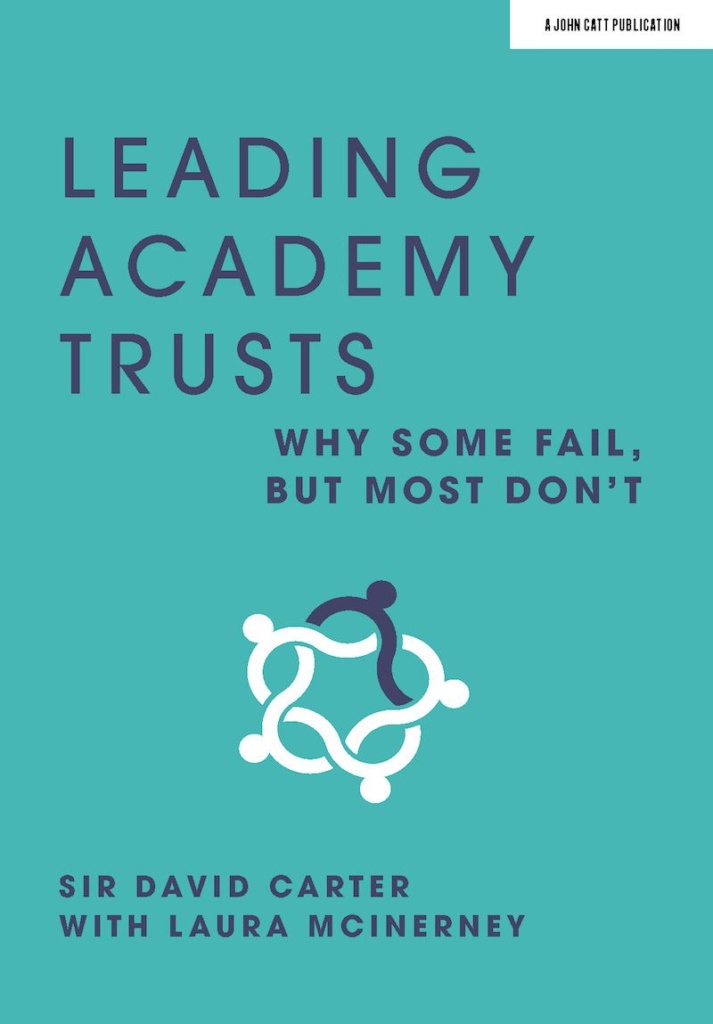
If I reflect on my own leadership journey from the point at which I became a headteacher in 1997, I would say that there are three features that the most effective leaders have in their personal portfolios that enable them to make a difference to the lives of the communities that they serve.
- They understand how to turn the language of moral purpose into the actions that create more socially just communities
- They recognise that their core business is school improvement, but that improving the quality of teaching is the only intervention strategy that makes a lasting difference
- They value and thrive on the oxygen that meaningful collaboration presents to them, their teams and their schools
It is these three features that underpin so many of my beliefs about leadership in the academy trust sector and is the reason why I have structured the book around the six critical factors that from my experience create the culture for improvement to be established and maintained.
1. Firstly, we need to understand what a multi academy trust is and how as an educational charity the organisation operates. The occasional opaqueness in the system about this sometimes confuses parents and staff, and we need to be better at explaining how the structure works. The best starting point for this, and the reason why it is chapter one in my book is that the identification and articulation of the values that underpin the leadership and governance of the trust is essential and if ignored, can create immense challenges around confidence and trust in the organisation and the people who run it.
2. Secondly, the role of the strategic leader, the Chief Executive Officer (CEO) is a relatively new one in the system, yet it is the anchor around which the success of the trust revolves. I wanted to explore the difference between single and multiple school leadership and the routes that different leaders have taken to arrive in this role. Understanding the core competencies that leaders with this responsibility need to develop is an important part of the leadership development that is being undertaken across the sector.

3. The third critical area I wanted to focus upon in some detail was the need for trusts to build their school improvement strategies based upon the unique performance challenges of each of their schools. My view is that every school in the country requires improvement and the truth is just a matter of scale and challenge. Whether you are leading one of the most outstanding schools in the country or a school that has been placed in special measures, the need to plan the support and improvement that reflects the trajectory of each school is vitally important. Understanding the precise position on the improvement curve that each school has reached is one of the key strategic foci that boards of trustees must have awareness of. Once this has been acquired, the trust then needs to ensure that support is provided to the schools that reflects their unique challenges.
4. The fourth area that the book addresses flows from the way that a trust identifies and develops the talent of its workforce. I called this chapter “Why should anyone work for you?” because I wanted to focus not only on the professional nurturing of individuals but also how as an employer, the trust takes care of its workforce and looks after their wellbeing. When such a large percentage of a trust’s budget is allocated to the workforce, why would any credible organisation not have a talent management strategy that helps every adult to be the best professional version of themselves that they can be? Capacity to lead school improvement is essential and without understanding where the most effective practice in the trust is located the talent management plan will be compromised.
5. Governance is one of the most important aspects of successful trust leadership. When I have seen trusts fail, it is usually down to a failure of governance and leadership. I turn my focus in this section of the book to these four areas;
- How the trust board builds and develops its strategy
- Building a successful board
- The Scheme of Delegation between the board of trustees and the local boards at the academies
- The questions that Trustees and Governors need to ask when focusing on the school improvement capacity of the trust
6. The final critical area and the last chapter is built around two themes. Firstly, what are the risks that trusts need to focus upon and what might be the mitigations to resolve them? Developing a healthy attitude towards risk that does not reject creativity and opportunism on the one hand or reducing every decision to a tick list risk register approval on the other is the nub of this debate. The second theme is both topical and current and addresses the challenges and priorities that the education sector needs to think hard about as we move towards a post-pandemic era. Schools that are members of strong trusts are in my view better prepared than stand-alone schools to build this resilience. Over the past six months some of the barriers between the academy and maintained sectors have been reduced with a different type of collaboration and support becoming evident across the sector.
Sharing what works is an important contribution to building the capacity and capability of the sector and the more that we can do this the stronger our school system will become. The MAT reform , as a major structural change, is not a silver bullet to increase standards, but it does create the mechanism where the strongest Teachers, Leaders and Governors can come together to help a school improve quickly.
Register for free
No Credit Card required
- Register for free
- Free TeachingTimes Report every month